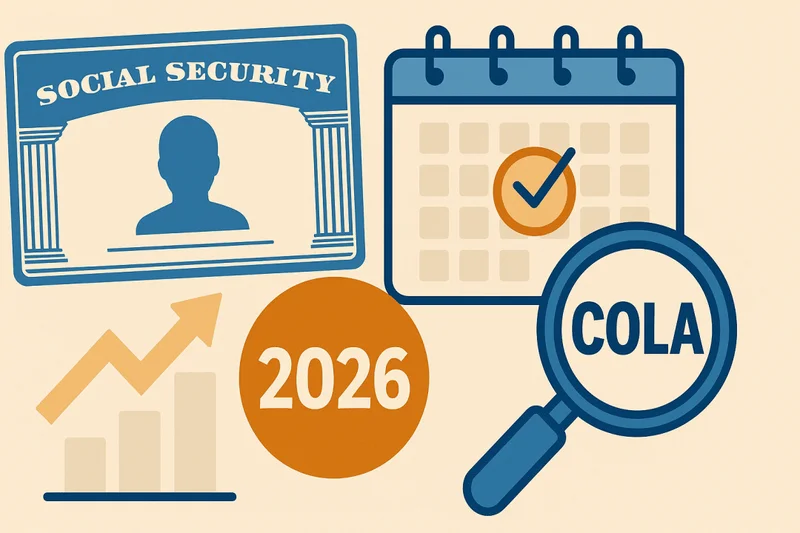Every October, a peculiar ritual plays out across America. Some 70 million people—retirees, disabled workers, survivors—collectively hold their breath, waiting for a single number to be released by a government agency in Washington. It’s a quiet, private tension, played out in kitchens and living rooms, as people stare at their budgets and wonder if the math will work for another year. This number, the Cost-of-Living Adjustment (COLA), is supposed to be a simple, automatic inflation correction.
But it’s never that simple.
The initial projections for the social security 2026 cola update are already circulating. The consensus forecast hovers around 2.7%. For the average retired worker, that translates to an increase of about $54 a month. Let’s be precise: a current benefit of $2,000 would become $2,054. It’s an amount that barely covers a modest increase in the grocery bill or a couple of co-pays. It’s something, but it’s not a windfall.
The announcement is scheduled for October 15th, a date circled on the calendar like a doctor’s appointment. Yet, focusing on whether the final figure is 2.7% or 2.8% is like analyzing the font on a foreclosure notice. It misses the two far more significant, systemic risks embedded in the process: a flawed measurement tool and a political system that’s threatening to break the calculator itself.
The Flaw in the Machine
Before we get to the political theater, we have to talk about the math. And this is the part of the process that I find genuinely puzzling from an analytical standpoint. The Social Security Administration doesn’t just guess at inflation; it uses a specific metric: the Consumer Price Index for Urban Wage Earners and Clerical Workers, or CPI-W. The COLA is determined by the change in this index during the third quarter (July, August, and September) of the current year compared to the same period last year.
Here’s the problem. Using the CPI-W to calculate a COLA for retirees is like using a map of the subway system to navigate the open ocean. It’s a tool, but it's for an entirely different journey. The spending habits of "urban wage earners" bear little resemblance to those of a 75-year-old on a fixed income. Retirees spend a disproportionately large share of their income on healthcare and housing, two categories whose inflation rates often outpace the general index. The CPI-W, by its very design, underweights these costs.

For years, analysts have pointed this out, advocating for the use of an experimental index called the CPI-E (for Elderly), which more accurately reflects seniors' spending. But the system remains unchanged. So, when the SSA announces a 2.7% COLA, the real-world inflation experienced by the very people it’s meant to protect could be substantially higher. That small discrepancy, compounded year after year, is a quiet erosion of purchasing power. It’s a slow-motion default on the promise of Social Security.
This isn't just an academic debate. It's the difference between affording medication and skipping doses, between keeping the heat on and putting on another sweater. While other, smaller adjustments are also on the table for 2026—like an increase in the taxable wage base ceiling (meaning high earners will contribute more)—they are patches on a system whose core inflation gauge is fundamentally miscalibrated. What good is putting more money into a fund if the formula for paying it out is systematically shortchanging its beneficiaries?
The Political Wildcard
If using the wrong tool wasn't enough of a problem, we now face the possibility that the person wielding the tool might not even show up for work. The specter of a federal government shutdown looms over the entire process. This isn't just a headline, as reports like Social Security's 2026 COLA News May Be Delayed. Here's What Retirees Need to Know. make clear; it's a direct threat to the release of the data itself.
The COLA calculation depends entirely on the inflation report compiled by the Bureau of Labor Statistics (the agency that produces the CPI-W). During a shutdown, the BLS stops publishing economic data. No data, no calculation. The October 15th announcement, a date millions rely on for financial planning, would be indefinitely delayed.
Think about that. A purely mechanical, data-driven process, a financial lifeline for one-fifth of the country, can be held hostage by a congressional budget squabble. The experts can build their models and predict a COLA in the tight band between 2.7% and 2.8%, but their forecasts are meaningless if the government locks the doors and turns off the lights.
This introduces a level of uncertainty that should not exist in a program like Social Security. Kevin Thompson of 9i Capital Group correctly notes that "changes are inevitable," but he's referring to long-term solvency. The shutdown threat represents a more immediate, acute failure: the inability of the government to perform its most basic administrative duties. It injects chaos into a system designed to provide stability. For millions of Americans, this isn't an abstract political fight. It's a direct risk to their ability to plan for the most basic necessities just a few months from now.
A Flawed Calculation for a Fragile System
The annual fixation on the COLA percentage is a masterclass in misdirection. We scrutinize the decimal points, debate whether $54 is enough, and analyze the immediate impact. But the real story isn't the number. It's the institutional decay the number represents. We are using a flawed instrument—the CPI-W—to measure the financial reality of our most vulnerable citizens, guaranteeing they fall a little further behind each year. And now, the very process of measurement is itself threatened by political dysfunction. The system isn't just running out of money in the long term; it's becoming operationally unreliable in the short term. The real social security 2026 cola update is that the program's foundation is cracking, and almost everyone is too busy watching the paint peel.
